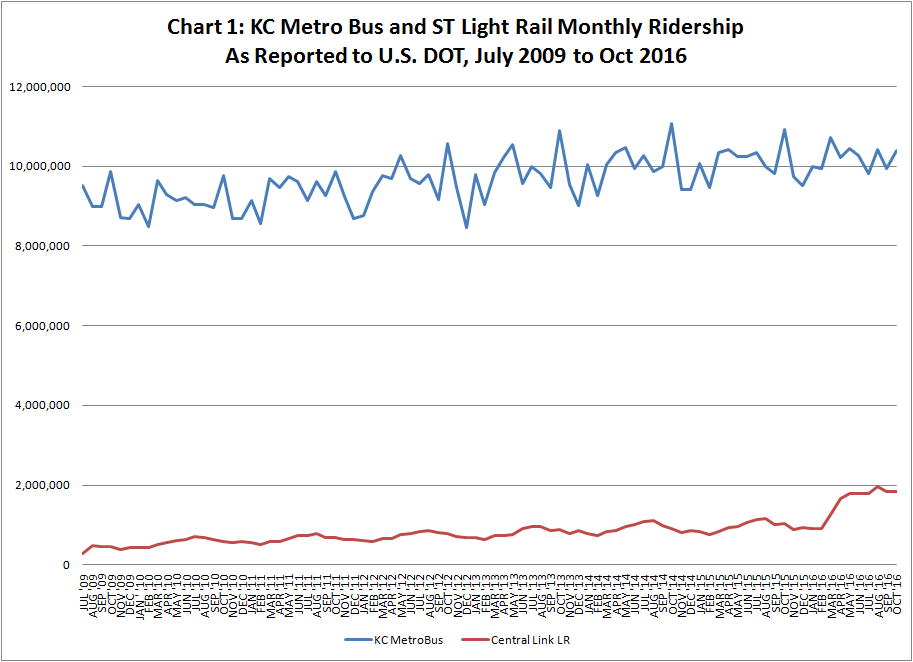
Data source: https://www.transit.dot.gov/sites/fta.dot.gov/files/October%202016%20Adjusted%20Database.xls
Chart 2: Five month moving average of monthly boardings for bus and light rail separately, to smooth out fluctuations and more clearly show the monthly boardings trend over time, November 2009-October 2016. This technique muffles the effect of different numbers of non-holiday weekdays in a month. Metro bus boardings trend was flat in 2010-2011 coming out of the recession, then grew, and now appears to be flat again with little growth since the summer of 2014 compared to 2011-2014.
Data source: https://www.transit.dot.gov/sites/fta.dot.gov/files/October%202016%20Adjusted%20Database.xls
Chart 3: Five month moving average of monthly boardings for bus and light rail stacked on one chart to show combined total for both modes, November 2009-October 2016. Boardings in these charts count vehicle boardings, and of course some light rail riders are riding a bus to get to the rail station. What was one boarding earlier is now a bus boarding PLUS a rail boarding for each trip by those who transfer in the morning from bus to rail, for a total of two boardings where there used to be just one. Not surprisingly, combined bus and rail boardings have hit a new high in the most recent months on this chart.
Data source: https://www.transit.dot.gov/sites/fta.dot.gov/files/October%202016%20Adjusted%20Database.xls
Chart 4: Number of light rail boardings as a fraction of Metrobus boardings. The fraction of light rail boardings has risen 2009 to 2016 from 3% to 18%. In terms of sheer raw boarding numbers, Metrobus in 2016 remains five times more important for mobility in the Seattle region than Sound Transit light rail.
Data source: https://www.transit.dot.gov/sites/fta.dot.gov/files/October%202016%20Adjusted%20Database.xls